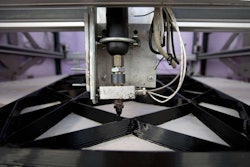In the current global marketplace, there are a many “green” regulations that businesses need to comply with in order to be successful with their partnerships. From the European Union Directives of Registration, Evaluation, Authorisation and Restriction of Chemicals (REACH) and Restriction of Hazardous Substances (RoHS) to the Waste Electrical and Electronic Equipment (WEEE) and the United States Conflict Minerals directive, manufacturers are hit with a range of regulations that can have a major impact on their success and business processes.
The financial and technological requirements of these directives alter the entire business strategy for electronic manufacturers. Going green and transitioning to a compliant organization requires investments of people, time and resources. The impact on manufacturers is massive and non-compliance can cost organizations millions of dollars.
The RoHS Directive, effective July 2006, applies to electrical and electronic products, and their component parts. This law requires the virtual elimination of certain heavy metals and halogens from electronic equipment. The WEEE Directive, effective August 2005, aims to raise the level of recycling of electrical and electronic equipment (EEE) and encourages designers to create products with recycling in mind. RoHS supports this by reducing the amount of hazardous chemicals used in production. REACH entered into force on June 1, 2007. REACH makes industry responsible for assessing and managing the risks posed by chemicals and providing appropriate safety information to their users. More recently, the Conflict Minerals regulation implemented in the United States with a pending regulation in the EU, requires certain companies to disclose their use of conflict minerals (tantalum, tin, gold or tungsten) if those minerals are necessary to the functionality or production of a product manufactured by those companies.
All of these regulations not only have the environment in common, they all require exceptional data and documentation management. Environmental regulations will continue to evolve as various countries initiate their own directives and existing regulations are revised. It is extremely important that manufacturers implement systems and processes that can adapt to this environmental movement.
The Cost of Compliance
Compliance with environmental directives can cost manufacturers in many ways. They are impacted by the cost to implement new processes in how they procure, design and manufacture products. They are also impacted by the cost of hefty fines and penalties if they are not compliant.
Organizations must consider factors such as the amount of product re-design efforts and additional data management required to track supplier product material. Many times this is a manual process where someone has to collect all of the vendor’s datasheets and log the information. Costly re-work can result from incorrect tracking of component information. The OEM, reseller or importer that violates the rules and regulations can incur severe penalties. These penalties may be as extreme as a complete product recall from the European Union markets or other regulated countries where product is shipped.
In order to prevent the regulations from becoming a major cost burden, manufacturers should prioritize investments to comply with current and future environmental directives. Managing this information in an electronic system can help save a manufacturer on resource and re-work costs.
Best Practices to Meet and Maintain Compliance
What should electronic manufacturers do to be compliant? Some say it should be dealt with at the manufacturing level, others say the senior management level. Ultimately, the entire organization should be involved and executive support for implementing formal processes and technology is a must. However, efficient compliance management should begin at the design level.
For example, to comply with RoHS requirements, the contents of parts must be identified down to the material composition level. It is essential to classify component parts early in the design cycle to capture any issues up front. Tracking RoHS data early on saves money in the manufacturing phase by ensuring that the engineers are equipped with information to design in items that are most appropriate for compliance. Technology such as Product Lifecycle Management (PLM) software can detect issues early in the design cycle because it sits closer to the engineering/design space than other enterprise solutions that are more familiar with the manufacturing space. It provides engineers with all of the necessary compliance information so that they can make better design decisions up front.
Another key aspect of any environmental compliance program is the importance of document management. Documented proof of compliance will be needed; otherwise, regulated geographies can bar entry. Authorities require that manufacturers properly maintain records of products by storing all compliance declarations/certificates associated to a part.
PLM solutions can support the variety of data that needs to be managed for any type of regulatory compliance. Everything from vendor certificates of compliance to vendor datasheets can be stored in a PLM system with the ability to easily aggregate this data for compliance reporting.
Case in Point
For MRV Communications, a global supplier of packet and optical solutions, tracking information for REACH was becoming an expensive and tedious task. They were managing this information using Excel spreadsheets, which introduced the potential for costly errors. They wanted to find a solution to help meet and maintain compliance in a more efficient manner. As a central repository for all of their product information (Bill of Materials, engineering changes, product documentation and quality/CAPA processes), their PLM system became the go-to solution for managing their associated REACH data and documentation.
MRV is using PLM as their main library for all of their green/sustainability practices. They utilize the software to track and manage all of their supplier certifications. Storing the compliance document at the individual manufacturer part level allows them to quickly and easily generate a package that identifies all of the REACH documents for every approved vendor. “Managing REACH information in our PLM system allows us to run reports on a moment’s notice to verify that a supplier is current with their certifications,” stated Cyndi Kuka, Document Control Manager for MRV Communications. “In addition, being able to upload a new document once and have all affected manufacturer part numbers updated saves us from having to change over 31,000 records individually.”
In order to meet and maintain compliance, manufacturing companies will need to rely on software solutions that can ensure that information sharing and data classification is completely accurate and accessible to all product development parties. Software solutions can support manufacturers’ initiatives in successfully meeting compliance. PLM can alleviate the costs and pains of compliance by automating the data management process, enabling manufacturers to easily track, store and report pertinent information, and providing a solution that can adjust to meet the requirements of new and evolving environmental directives.
Chuck Cimalore is the CTO at Omnify.























